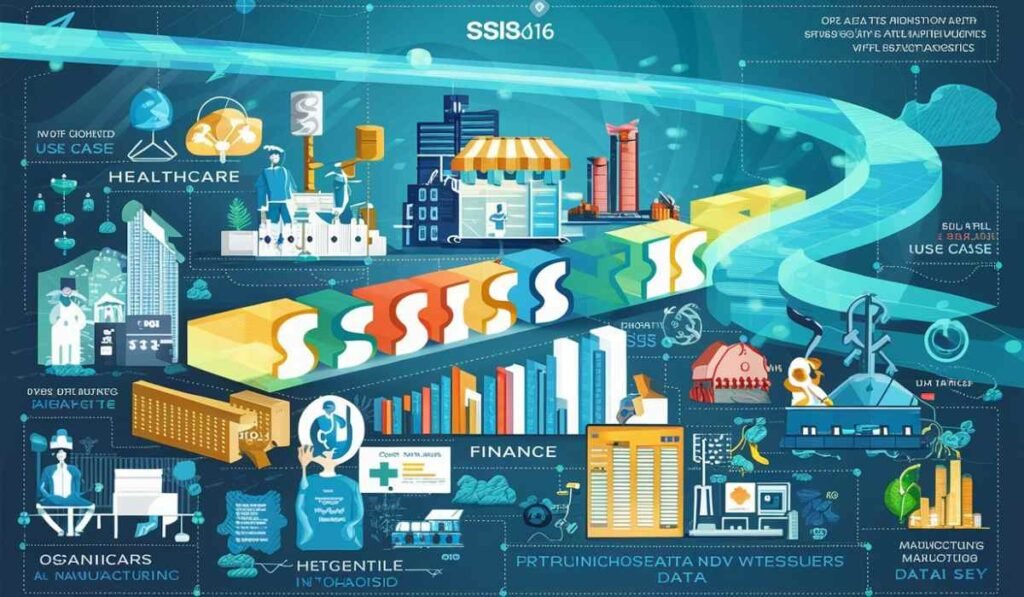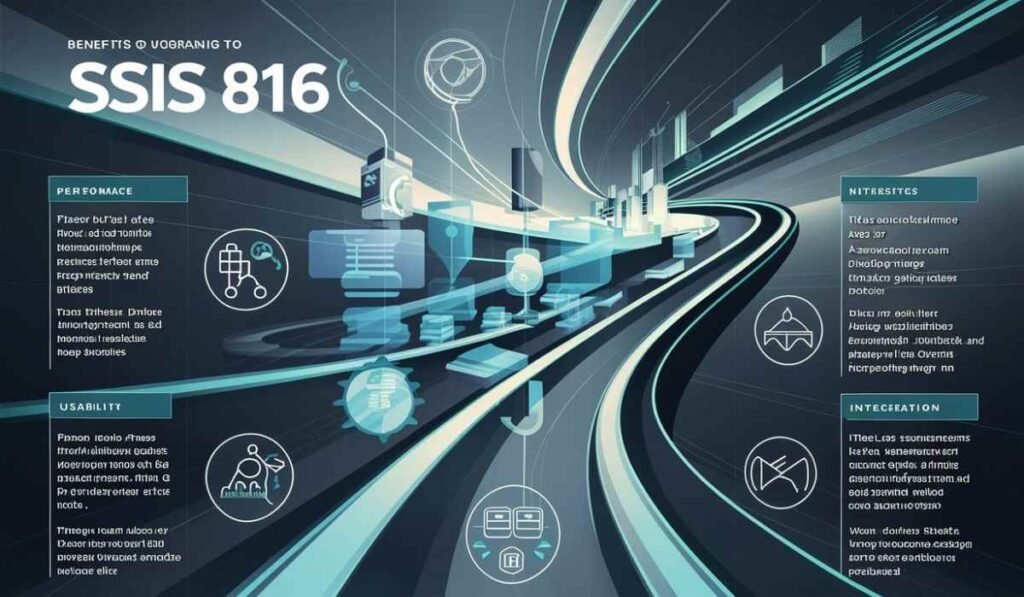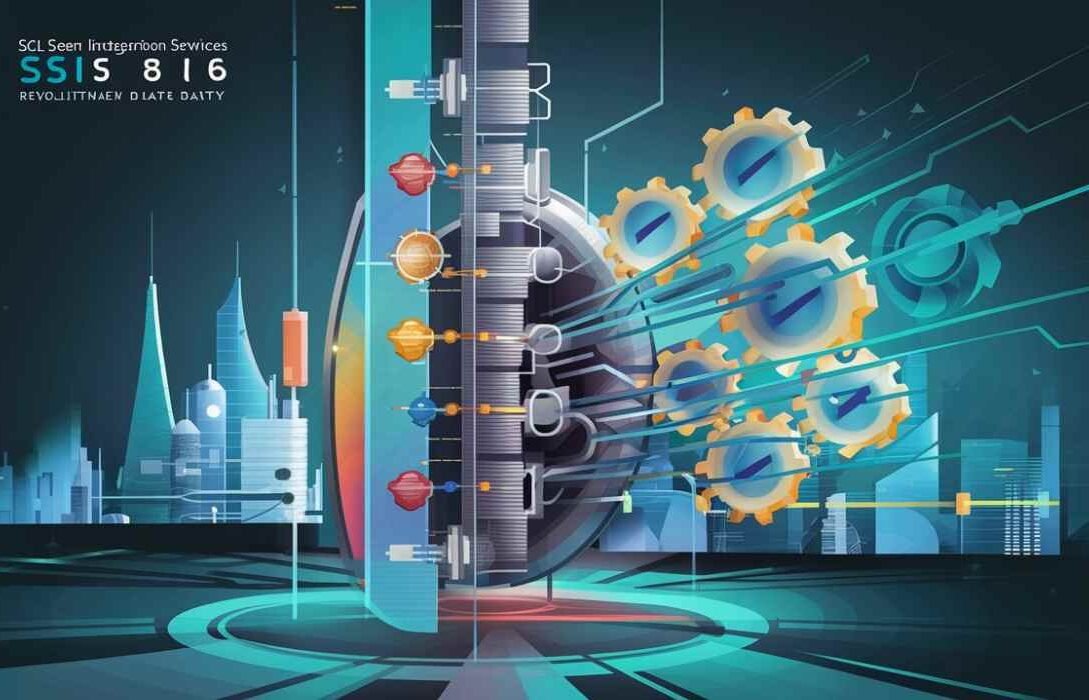Table of Contents
SQL Server Integration Services SSIS816 is a groundbreaking utility that establishes fresh standards for operation, scalability, and effectiveness within the dynamic domain of data management.
SSIS 816, the most recent version of the SSIS platform, was created by Microsoft with the specific purpose of tackling the growing intricacies that data ecosystems of the twenty-first century require.
In an effort to furnish a thorough examination of SSIS 816, this article endeavors to cover its fundamental characteristics, architectural framework, pragmatic implementations, advantages, and prospective developments.
Understanding SSIS816:
SIS 816, which stands for SQL Server Integration Services version 816, is a resilient instrument for integrating and transforming data.
Its primary objective is to enable the smooth transfer, manipulation, and computation of data across a wide range of systems and databases.
The software provides an extensive collection of capabilities and features that are designed to simplify intricate data-related duties and enable users to effectively oversee their data resources.
Key Features And Enhancements:
SSIS816 integrates an abundance of improvements and novel functionalities that significantly enhance its capacity for data transformation and integration.
A few of the most important features are:
- SSIS816 incorporates an abundance of improvements and novel functionalities that significantly enhance its capacity for data transformation and integration. A few of the most important features are
- Improved Security, Scalability, and Performance: Significant improvements in scalability and performance guarantee quicker data processing with less resource usage. Data security is maintained during the integration process thanks to enhanced security features including access limits and sophisticated encryption solutions.
- The introduction of Java support allows SSIS816 to be more compatible and facilitate interaction with Java-based services and applications.
- Better Debugging and Logging: Developers may now more easily detect and fix problems that arise throughout the data integration process thanks to improved troubleshooting and error handling capabilities.
SSIS816 Integration And Transformation:

The architecture of SSIS816 is designed to offer flexibility, scalability, and efficiency in data integration tasks. It comprises several core components, including:
- Control Flow: Acts as the orchestrator of SSIS packages, allowing for the creation of workflows that specify the execution order of tasks.
- Data Flow: At the heart of SSIS816, where data is extracted, transformed, and loaded (ETL). Provides a visual design surface for building data integration logic.
- Connection Managers: Responsible for establishing connections to various data sources and destinations.
Deployment And Management:
SSIS816 introduces significant improvements in deployment and management, streamlining processes and enhancing efficiency. Key enhancements include:
- Enhanced Management and Deployment Processes: Strengthened support for project deployment model, enabling centralized management of projects and associated packages.
- Scale-Out Execution: Introduction of scale-out execution capabilities, allowing SSIS packages to be executed in parallel across multiple worker machines for improved performance.
- Improved Fault Tolerance and Throughput: Enhanced error handling mechanisms and improvements in data flow and execution engines lead to increased fault tolerance and throughput.
Practical Applications And Real-World Use Cases:

SSIS816 finds applications across various industries, helping organizations streamline data integration processes and gain valuable insights from their data. Real-world use cases include:
- Healthcare: Integrating patient data from various sources for comprehensive care and analysis.
- Retail: Consolidating data for customer behavior analysis and dynamic pricing.
- Cloud Services and AI: Working with integration with cloud services and preprocessing data for AI and machine learning models.
Installation And Configuration:
Deployment and configuration are crucial for utilizing its advanced capabilities. Steps include:
- System Requirements: Ensuring compatibility with operating systems and database servers.
- Installation Process: Installing SQL Server Data Tools (SSDT) and SSIS features.
- Configuration Steps: Creating SSIS catalog, configuring scale-out execution, and security settings.
Working With SSIS816:
From basic data movements to complex transformation workflows, it accommodates a myriad of data integration tasks. Key aspects include:
- Creating Packages: Designing packages using Visual Studio and utilizing templates and wizards for common tasks.
- Executing Packages: Deploying packages to SSIS catalog and monitoring execution statuses.
- Troubleshooting and Error Handling: Leveraging breakpoints, data viewers, and logging for effective troubleshooting and error handling.
Benefits Of Upgrading To SSIS 816:

Scalability Boost:
Because to SSIS816’s exceptional scalability, businesses can manage growing data workloads without sacrificing efficiency.
IT infrastructures are able to increase in tandem with the increasing needs for data due to the smooth integration of extra servers.
Performance Optimization:
SSIS 816 maximizes performance for procedures managing big datasets by taking advantage of parallel processing capabilities.
It speeds up insights and decision-making by cutting down on processing time and improving the effectiveness of data translation.
Resource Utilization Efficiency:
SSIS816 divides up processing work among several servers to optimize resource efficiency.
By removing the need for a single, strong server and removing bottlenecks, this ensures that resources are used as efficiently as possible throughout the entire company.
Cost-Effective Infrastructure:
SSIS816’s distributed architecture uses cheaper computer clusters to provide infrastructure management at a reduced cost.
This strategy is more cost-effective and produces results that are on par with or better than previous approaches, so firms can afford to use it.
Upgrading to SSIS816 offers numerous benefits for organizations, including in bullet form
- Enhanced Flexibility and Performance: Faster data processing and scalability for handling large volumes of data.
- Improved Security Measures: Reinforced data protection and secure deployment and management.
- Interoperability with Latest SQL Server Versions: Seamless integration with the latest SQL Server versions and enhanced support for cloud services.
- Cost-Effective Infrastructure: Reduced resource consumption and streamlined management leading to cost savings.
- Adaptability to Evolving Roles: Flexibility and scalability to accommodate evolving data integration needs.
Modifications and Upgrades to SSIS-816:
Compatibility with Various SQL Server Versions:
SSIS-816 is designed to seamlessly integrate with SQL Server 2016 and later editions, offering enhanced features and performance.
Businesses are encouraged to upgrade their SQL Server installations to leverage the full capabilities of SSIS Scale Out.
Streamlined Cluster Configuration:
SSIS-816 simplifies the configuration of distributed processing clusters with improved tools and wizards.
This facilitates the development of scalable ETL environments, enhancing data processing efficiency and control.
Enhanced Security Measures:
To ensure secure distributed execution, SSIS-816 incorporates upgraded security measures, including strong authentication and encryption techniques.
This reinforces data security and privacy in distributed SSIS environments.
How To Upgrade To SSIS-816:
Compatibility Check:
Before upgrading, ensure that your current SQL Server setup is compatible with SSIS 816. Upgrade to SQL Server 2016 or later versions if necessary to utilize the enhanced features of SSIS Scale Out.
Backup and Restore:
Before upgrading, perform a full backup of all SSIS databases and applications to mitigate any potential data loss during the upgrade process.
SSIS Scale Remove Components Installation:
Install SSIS Scale Out components on all servers in the cluster to facilitate the upgrade process and ensure seamless integration into the distributed ETL architecture.
Cluster Configuration:
Configure the SSIS Scale Out cluster by defining the topology, assigning roles to servers, and establishing communication channels.
Utilize the user-friendly interfaces provided by SSIS-816 to streamline the configuration process.
Testing and Validation:
Conduct comprehensive testing to validate the upgrade, monitor performance, and ensure smooth operation of SSIS applications across the cluster.
Address any issues detected during testing before deploying SSIS-816 in a production environment.
Future Trends And Conclusion:
The future of SSIS promises continued innovation, with anticipated advancements including AI-driven integrations, enhanced security protocols, and increased cloud compatibility.
It remains an indispensable ally for organizations navigating the data-driven future, shaping the landscape of efficient data integration.
Conclusion:
SSIS 816 represents a paradigm shift in data integration and transformation, offering advanced features, enhanced performance, and scalability to meet the growing demands of modern data environments.
By harnessing the capabilities of SSIS 816, organizations can streamline their data management processes, gain valuable insights, and stay ahead in today’s data-driven landscape.
FAQS
Is SSIS-816 Compatible With Previous Versions Of SQL Server?
SSIS-816 is designed to work with SQL Server 2016 and later editions. It offers enhanced features and performance optimized for these versions.
It is not compatible with previous versions of SQL Server.
How Does SSIS Scale Out Improve Fault Tolerance In ETL Processes?
SSIS Scale Out enhances fault tolerance by distributing the data processing workload across multiple servers.
In the event of server failures, the impact on ETL processes is minimized, ensuring uninterrupted data processing and enhancing overall system resilience.
What Are The Key Benefits Of Upgrading To SSIS-816?
Upgrading to SSIS-816 offers several key benefits, including scalability boosts, performance optimization, resource utilization efficiency, and cost-effective infrastructure management.
It enables organizations to handle growing data workloads effectively while maximizing operational efficiency.
How Can Businesses Ensure A Smooth Upgrade To SSIS-816?
To ensure a smooth upgrade to SSIS-816, businesses should conduct a compatibility check to ensure their current SQL Server setup is compatible.
They should perform a full backup and restore of SSIS databases, install SSIS Scale Out components, configure the cluster, conduct thorough testing and validation, and address any compatibility issues or concerns.
What Security Measures Are Incorporated Into SSIS-816?
SSIS-816 incorporates enhanced security measures, including strong authentication and encryption techniques, to ensure secure distributed execution of SSIS processes.
This reinforces data security and privacy in distributed SSIS environments.











